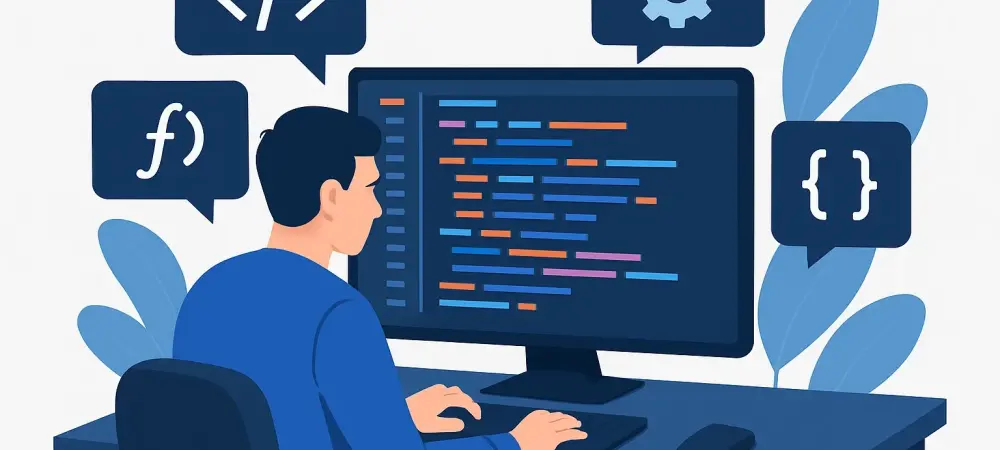The concept of vibe coding is emerging as a revolutionary stage in autonomous software development. Coined by AI expert Andrej Karpathy, vibe coding represents an innovative approach where artificial intelligence takes the lead in generating code, drastically transforming human-machine collaboration in programming. This radical methodology operates with Large Language Models (LLMs) that interpret a developer’s input and autonomously generate corresponding code, substantially reducing the need for manual intervention. The term “vibe coding” metaphorically alludes to a relaxed manner of programming, but its implementation demands profound adaptation in traditional software development practices. This initiative invites developers to reassess their interactive dynamics with AI—rendering the creation of code to computational predictions.
Nuances and Implications of Vibe Coding
Shifting from Traditional to Autonomous Programming Approaches
Vibe coding challenges software developers to abandon meticulous control over the programming process, entrusting AI to steer code production. This paradigm shift is eloquently characterized by experts like Shubham Nigam, referencing insights from MIT Technology Review’s Rhiannon Williams. They advocate for a comprehensive transition from the conventional approach, where every line of code is monitored and manually curated, to a more laissez-faire methodology. In this new model, developers articulate their requests to AI systems and then, rather than intervening, allow these systems to autonomously produce and refine the code. It marks a significant departure from the traditional hands-on practices that have long dominated software engineering. However, this innovative framework presents challenges, particularly regarding comprehension and management of code outputs. Without constant oversight, it raises concerns about the ability of developers to understand the intricacies of AI-generated code and the implications for debugging. The potential for unanticipated errors or misalignments increases when the scrutiny of every code segment diminishes. Despite this, proponents argue that the increased efficiency and creativity unlocked by this hands-off approach outweigh the risks, urging professionals to adapt by embracing AI’s generative capabilities.
Balancing AI Efficiency with Human Oversight
Nikolay Vyahhi of Hyperskill delves into these challenges in his discussions with industry insiders such as Artem Lukoianov, Heena Purohit, and Aldo Pareja. Lukoianov appreciates vibe coding’s transformative powers, citing its ability to streamline coding tasks by focusing on broad instructions rather than exhaustive code verification. This model aligns with an appetite for efficiency, allowing developers to operate more instinctively, responding to AI-generated outcomes rather than dissecting every potential issue manually. Such an approach could vastly reduce the time and resources spent on software development projects while promoting imaginative solutions not confined by conventional coding practices. However, other experts caution about the potential pitfalls. Aldo Pareja highlights the dangers inherent in relying too heavily on AI without comprehending its operations. He uses the metaphor of trying to “vibe out” of problems, emphasizing the risk of treating AI outputs as black boxes prone to unpredictable errors. Pareja suggests that the development of more robust integrated development environments (IDEs) could better support vibe coding practices, introducing seamless testing tools to supplement AI’s arbitrary assertions. Still, oversight remains crucial, especially in production systems managing complex environments where misjudgments could have high-stakes consequences.
Readiness of Large Language Models and Human Role
Evaluating LLMs for Contemporary Software Development
The readiness of current Large Language Models (LLMs) to take on vibe coding’s responsibilities draws varied viewpoints. While Artem Lukoianov offers an optimistic perspective, suggesting that LLMs possess nearly all capabilities required for vibe coding, others express caution. He argues that with comprehensive system engineering, precise input articulation, and the appropriate technological apparatus, AI could fulfill most coding needs. Such innovation is reminiscent of past advancements, where developers gradually relinquished intricate hardware oversight for broader software flexibility. In this context, Lukoianov envisions a future where AI automates substantial software development components, changing the landscape of software engineering forever.
Contrastingly, Aldo Pareja underscores the ongoing necessity for skilled full-stack developers who comprehend and manage the complex interdependencies within systems. The challenges of synchronizing diverse processes remain integral when relying solely on AI outputs. Any deficiency in human intervention could potentially magnify risks associated with system inconsistencies or failures without sufficient foresight. Thus, recognizing the limits of AI-generated artistry remains paramount to sustain technology’s reliability and functionality while navigating the transition within the industry’s evolving context.
Future Integration and Continued Human Importance
Vibe coding is transforming coding practices by encouraging software developers to relinquish meticulous control over the programming process and entrust AI with code generation. Endorsed by experts like Shubham Nigam, this shift is compellingly discussed in MIT Technology Review by Rhiannon Williams, who emphasizes the move from manually curated coding to a more relaxed approach. In this new coding paradigm, developers express their needs to AI systems and then step back, allowing these AI-driven systems to autonomously generate and refine the code. This represents a stark contrast to the traditional practices where developers closely monitor and tweak each line of code. Nevertheless, this innovative approach comes with its challenges, particularly around understanding and managing AI-produced code. With reduced oversight, there’s an increased risk of misconstrued code and unexpected errors. Despite these concerns, advocates argue that the efficiency and creative potential unlocked by this hands-off method significantly outweigh the risks, urging developers to adapt and embrace AI’s generative power.

